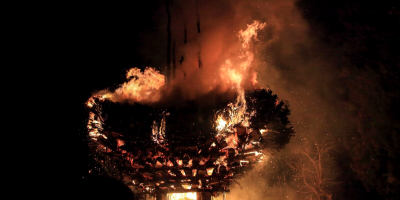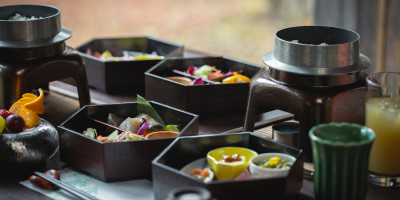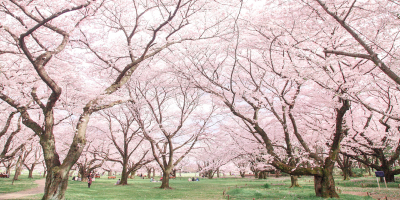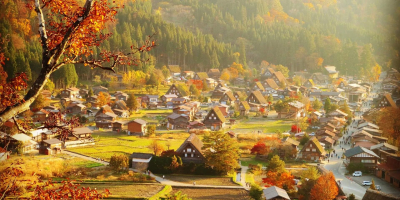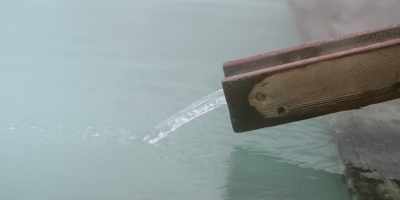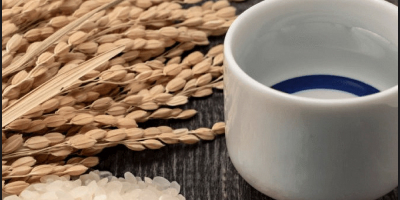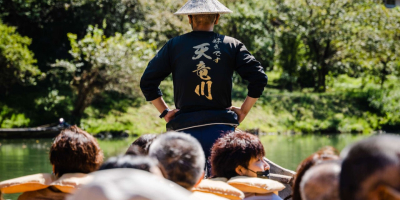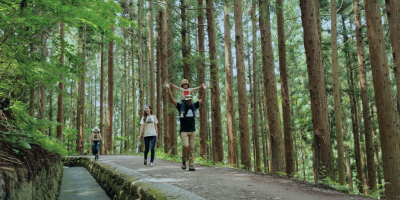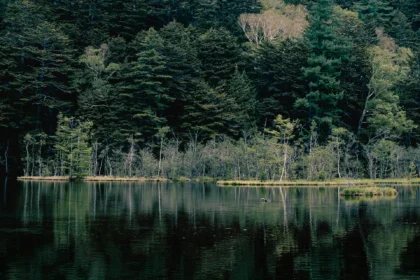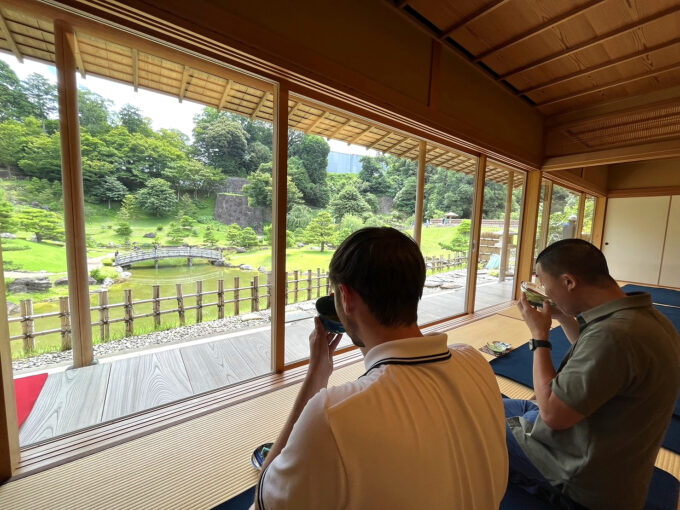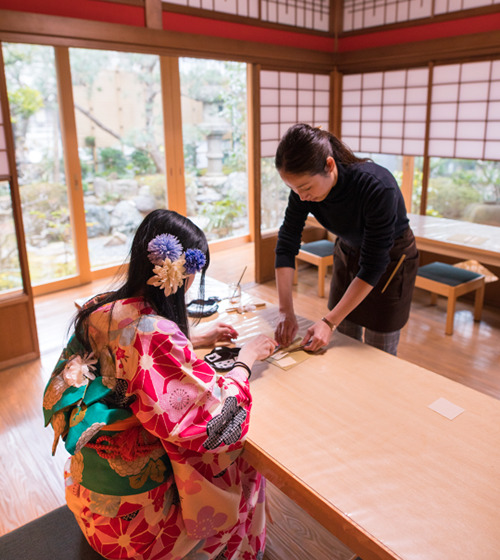Enjoy walking through its historic streets, or try stepping into one of the many cafes or restaurants where you can enjoy a beautiful view out over the buildings while you eat. The area also has museums, art galleries, historical shrines and even a couple of sake breweries. This truly is one of Kanazawa's greatest attractions!
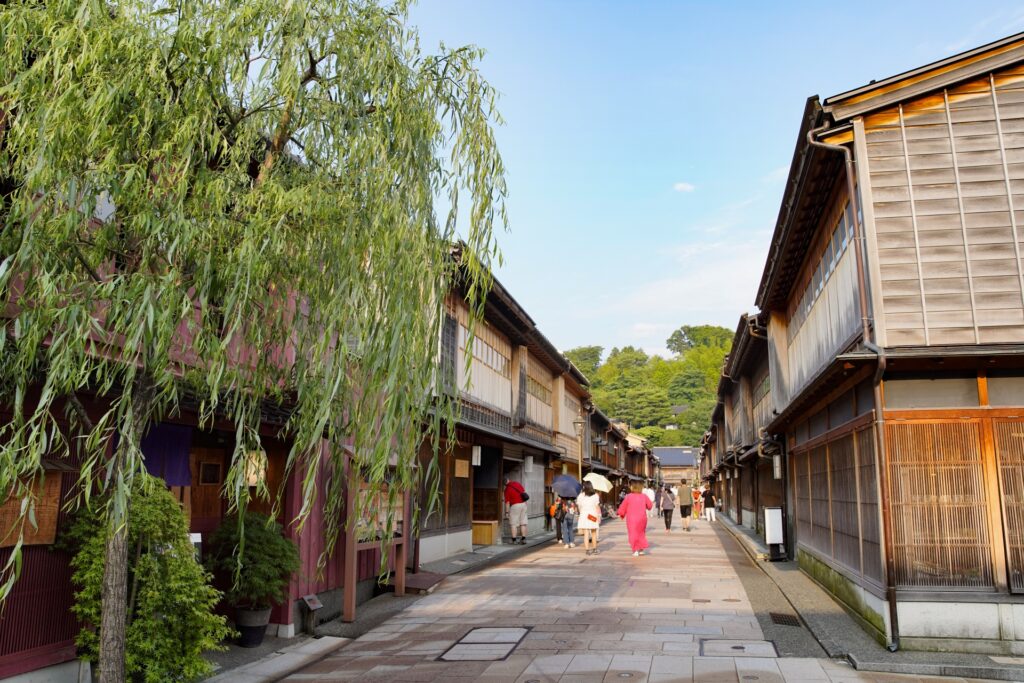
Higashi Chaya: A Pleasure Quarter

This district is the largest of three "chaya" districts districts in Kanazawa, where geisha would entertain their customers with singing, dancing and performances inside the teahouses. The district was founded in 1820 while the lord of Kanazawa was reorganising the city to prevent insurrections. The teahouses were grouped together into the three areas and entry was strictly monitored.
In most areas throughout the Maeda clan's domain, the rulers forbid the construction of two-storey houses. If the lord passed by while riding down the street, people could "look down" on him from their second storey - the height of scandal. However, the teahouses here were all constructed to have two storeys as the lord was never expected to visit. Samurai, meanwhile, were forbidden from entering as fraternising with a geiko was seen as a stain on his honour.
Samurai did sneak into the district, though. Using disguises, wearing a wig and bribing the guards, they'd sneak their way in. Geiko were the height of entertainment during the Edo Period and so the samurai were determined to get a piece of the action.
The Modern Tea District

The geiko culture flourished for the rest of the Edo Period, but dwindled as Western values surrounding pleasure quarters become more commonplace in Japan. The final teahouse in Higashi Chaya stopped operation in the 1920s. The area was a popular nightlife spot until the 1960s, but declined as the area around Kanazawa Station became more prominent.
It wasn't until the early 2000s that Higashi Chaya was revitalised. The district embraced its historical charm and leaned heavily into the geisha aesthetic and culture that had never truly vanished.
Some of the 90-or-so teahouses still stand, although all bar one have been repaired extensively, rebuilt, or renovated into a shop or cafe. Those which were too dilapidated to repair were demolished and some turned into residences.
Interesting Spots Around Higashi Chaya
There are plenty of interesting things to see and do around Higashi Chaya. Below are some of the ones we recommend the most. Walk around, enjoy the traditional atmosphere of the teahouse district as you learn about the history, eat sweets and drop into all the interesting shops.
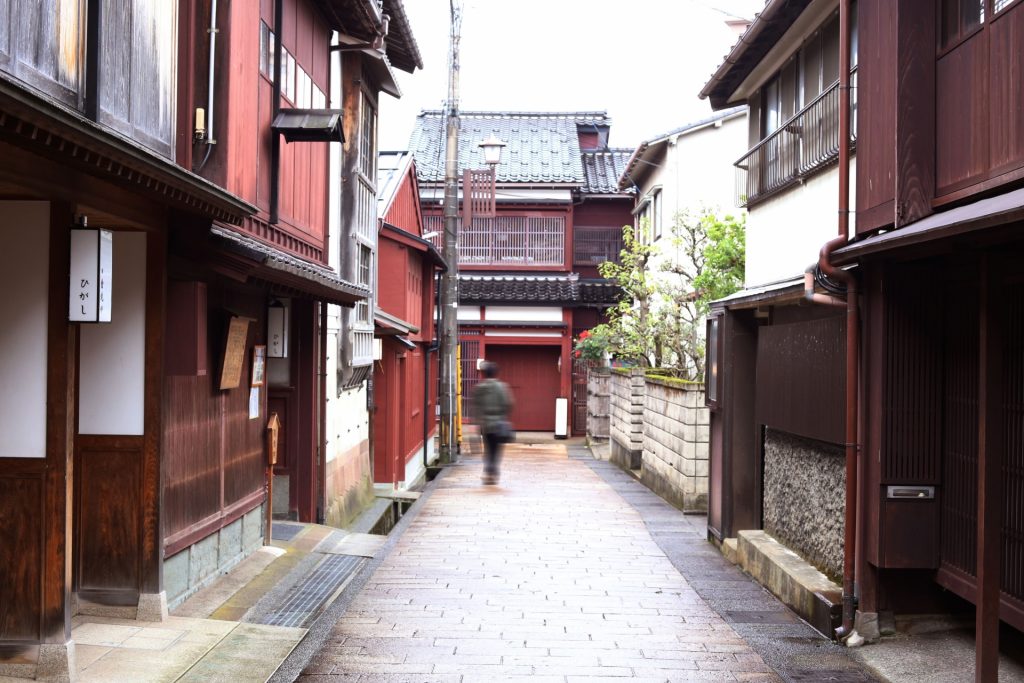
Hakuza Gold Leaf
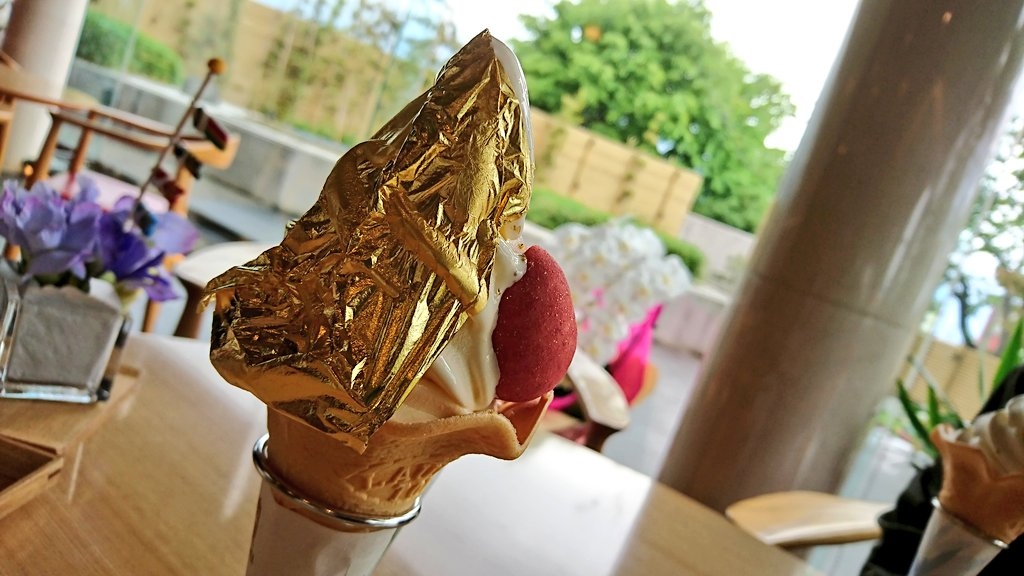
This shop sells a variety of gold leaf items. Kanazawa produces 99% of all gold leaf made in Japan, so this is the place to get some to commemorate your trip. The shop also has a golden room inside which is a bit surprising when you stumble upon it. They also produce a number of edible gold leaf items, many of which are easy to take home. Our favourite is the gold leaf disposable chopsticks - they release a small shower of edible gold leaf onto your plate when you crack them. They are a great way to bring a bit of Japan home to your family.
Kanazawa Yasue Gold Leaf Museum

Located on the outskirts of the district, the Kanazawa Yasue Gold Leaf Museum has many beautiful historical artifacts. It also has in-depth explanations on the laborious process in making gold leaf. You'll walk away with a greater understanding and appreciation for gold leaf as a product, and know why it's of such high value to locals here in Kanazawa.
Jiyuken

The large stone building in the main square. Jiyuken is considered one of the best old-style Japanese-Western fusion restaurants in the city. It serves omurice, European-style pork steaks, hayashi-rice and cream croquettes.
The restaurant opens at 11:30 A.M. and often has a long line by opening time, so grab a place if it's quiet!
Shima



For most, Shima is the highlight of their time in Higashi Chaya. This teahouse is the last of its kind here in the district and has been a museum for a century. Here, you can see how the geisha business worked, how the rooms were arranged, and a behind-the-scenes peak into the areas customers would never go.
For more information, read our page on Shima!
Utatsu Shrine

Utatsu Shrine is one of Kanazawa's oldest and served as the main shrine for the city until Oyama Shrine was founded in 1873. It has been used as a religious site since 718 but its name was changed to honour Maeda Toshiie as the first Lord of Kanazawa.
Now, it is counted as one of the five most important shrines in Kanazawa. It is said that the water from the well was used by the third lord, Toshitsune, to make a healing sake bath for his son to cure him from smallpox.
The shrine sits at the very back of the district, at the base of Mt. Utatsu. The small mountain was once a sacred site which was once climbed by rioters, calling for the later lord to release stockpiles of rice during a shortage in 1858.
Nanine Jizo

Seven samurai showed sympathies towards the rioters and formally took their complaints to the lord. The riots escalated and the local army was summoned to quell them. Under immense pressure, the lord released rice from the storehouses, and the people were able to eat.
However, the seven samurai were seen as ringleaders and were rounded up and captured. Two died in prison, while the other five were executed. The statues shown here at the temple honour them for standing up for justice and the common man in a time when that rarely happened.
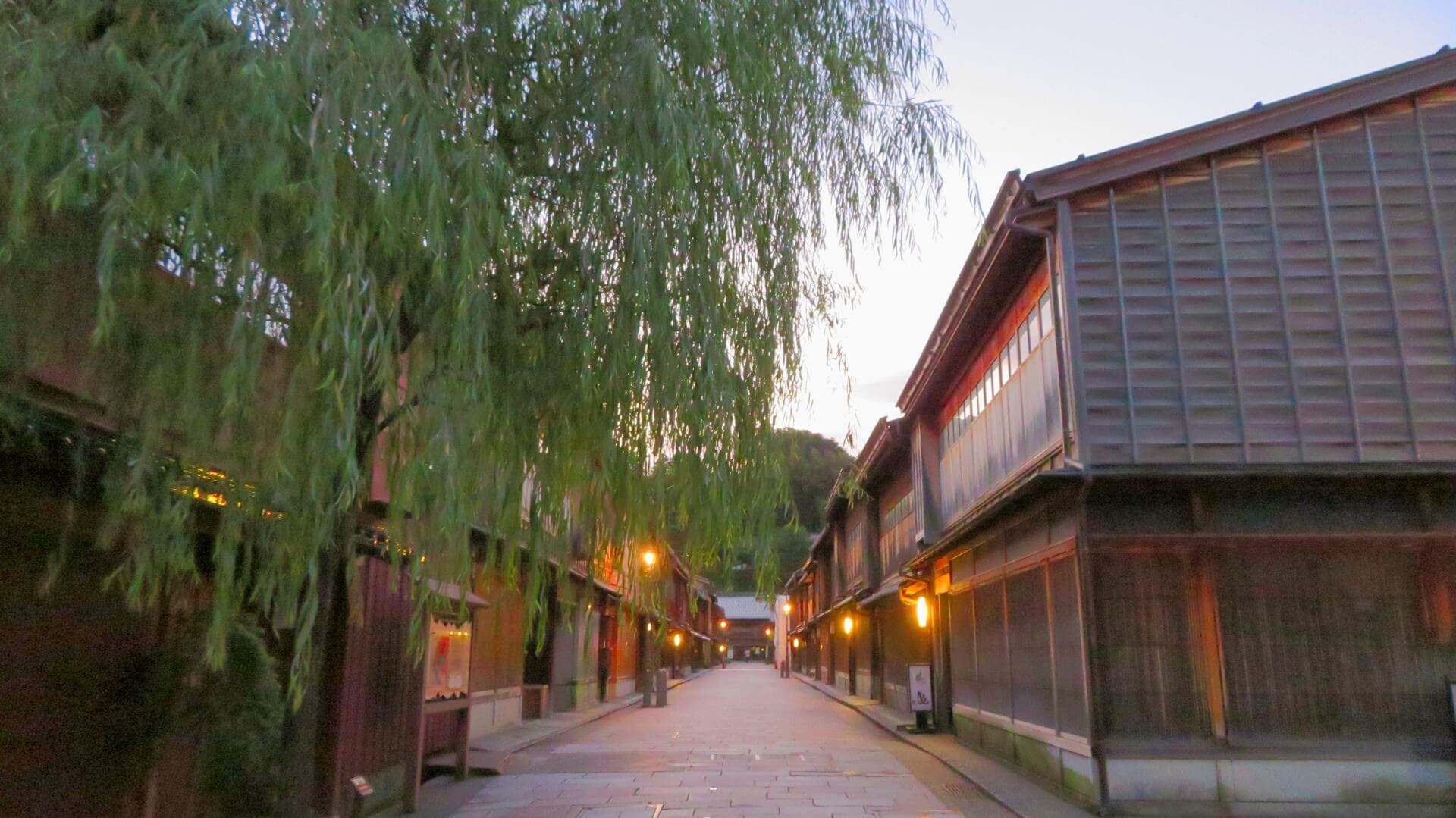
Kanazawa is quite friendly for those who are walking around the city and there are many sites that are within a 5-25 minute walk of the Higashichaya Teahouse district. It is near Kanazawa Castle, which then directly adjoins Kenrokuen Park at its entrance. The daimyo villa of Seisonkaku and Ishiura shrine, famous for its pond and tunnel of torii gates, are both excellent places to visit. The Higashichaya Teahouse District, Oyama Shrine, DT Suzuki Museum, 21st Century Museum, and Kazuemachi Geisha District are all also within a nice walk and help you dive even deeper into this fascinating city.
Are you interested in a guided tour around this beautiful city? See the Higashi Chaya district and many of the other sites mentioned above and all in one day!
KANAZAWA MAIN SIGHTS TOUR / all year round
This tour has you walk in the same streets as those from times past. Walk the streets the samurai of the Kaga clan and see a warrior's house from the Edo period. Relax and enjoy matcha in a tea house overlooking a beautiful garden next to the impressive castle walls. Stroll through the Kenroku-en garden like the daimyos of the Edo period and admire the artistry of the landscaping of not just the land but of the trees as well. Finally, walk through Higashi Chayamachi, the old geisha district, where you can shop, snack and take a tour of an opulent former tea house that was used by actual geisha in the past.
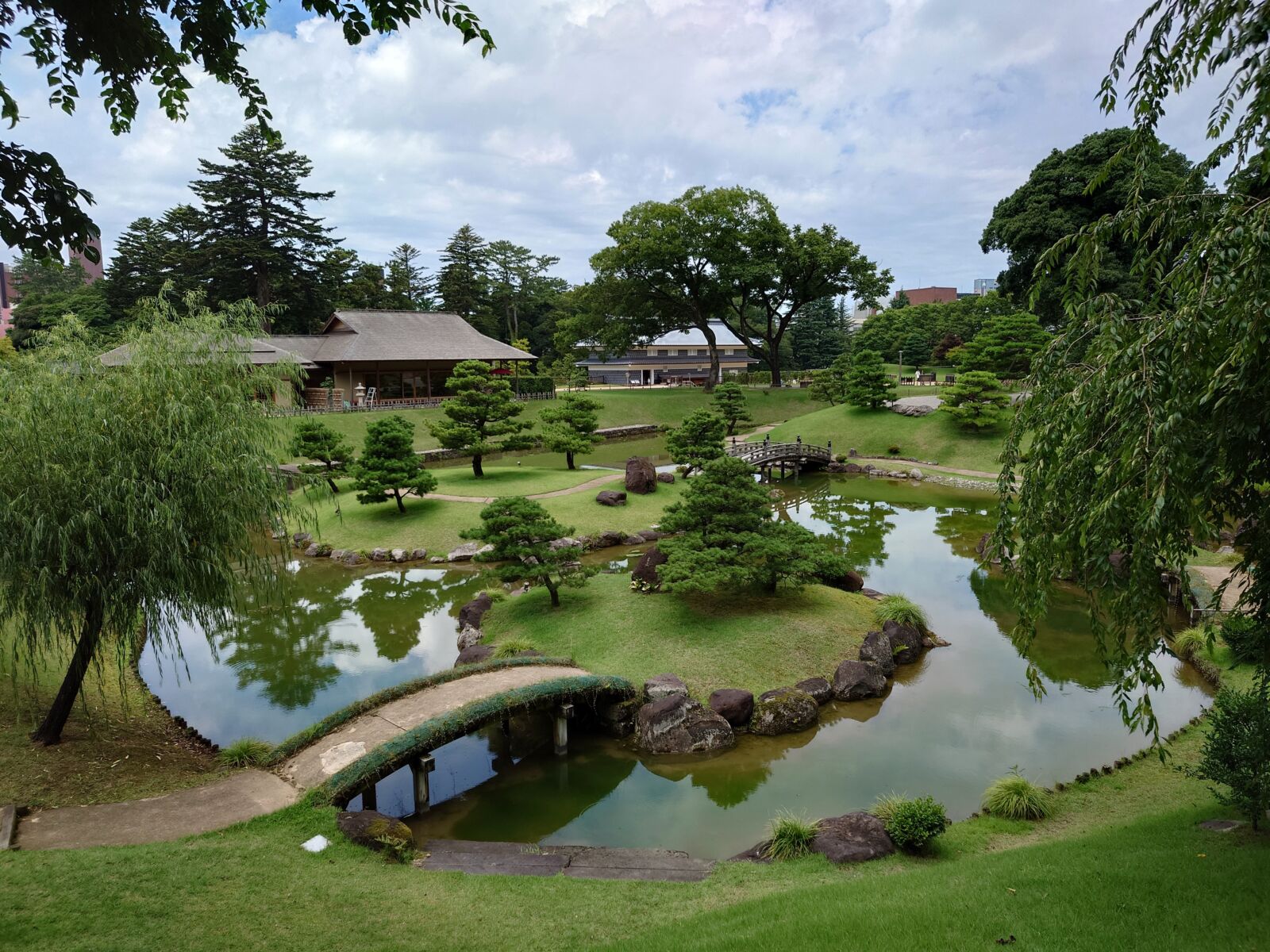
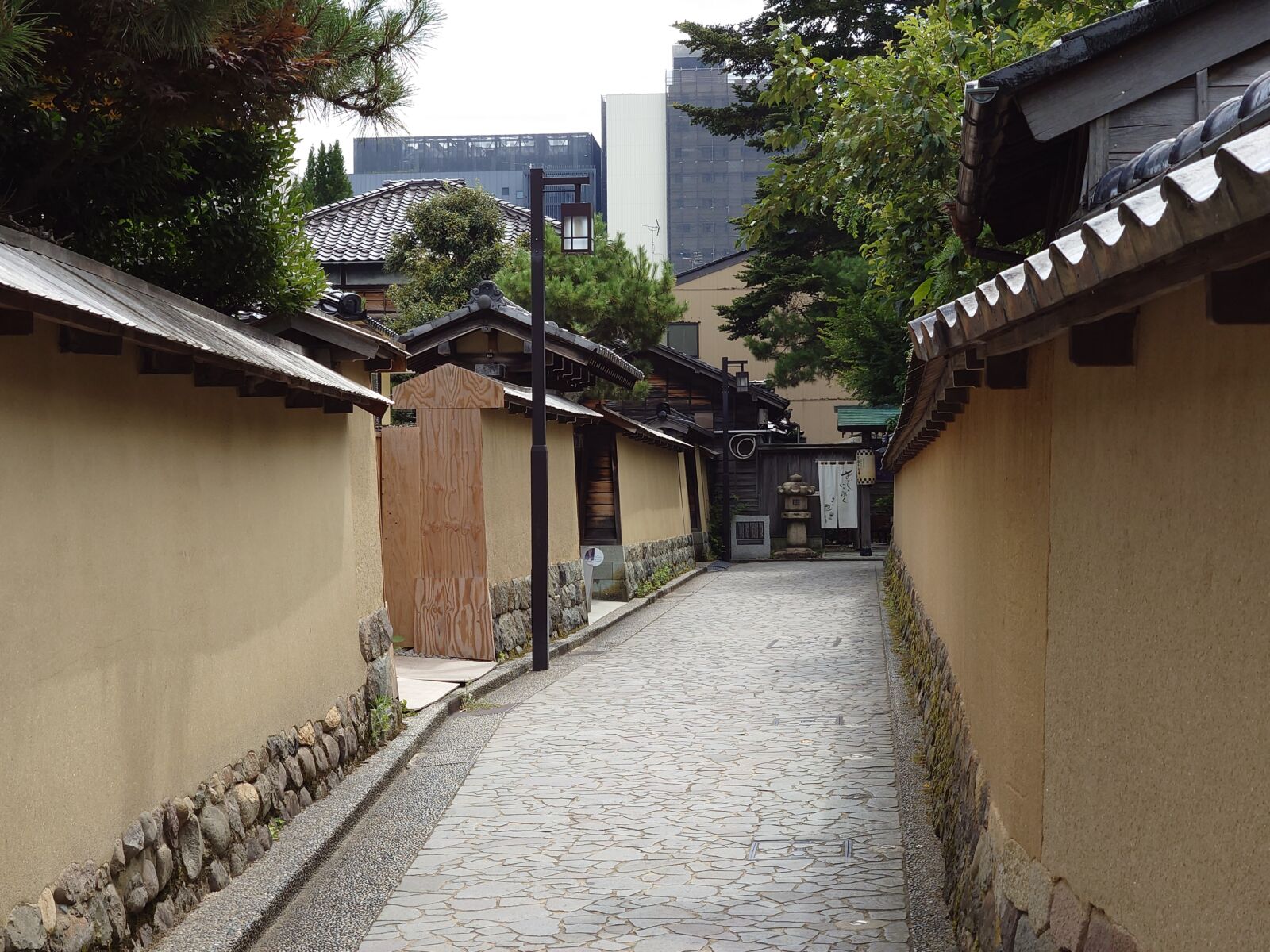
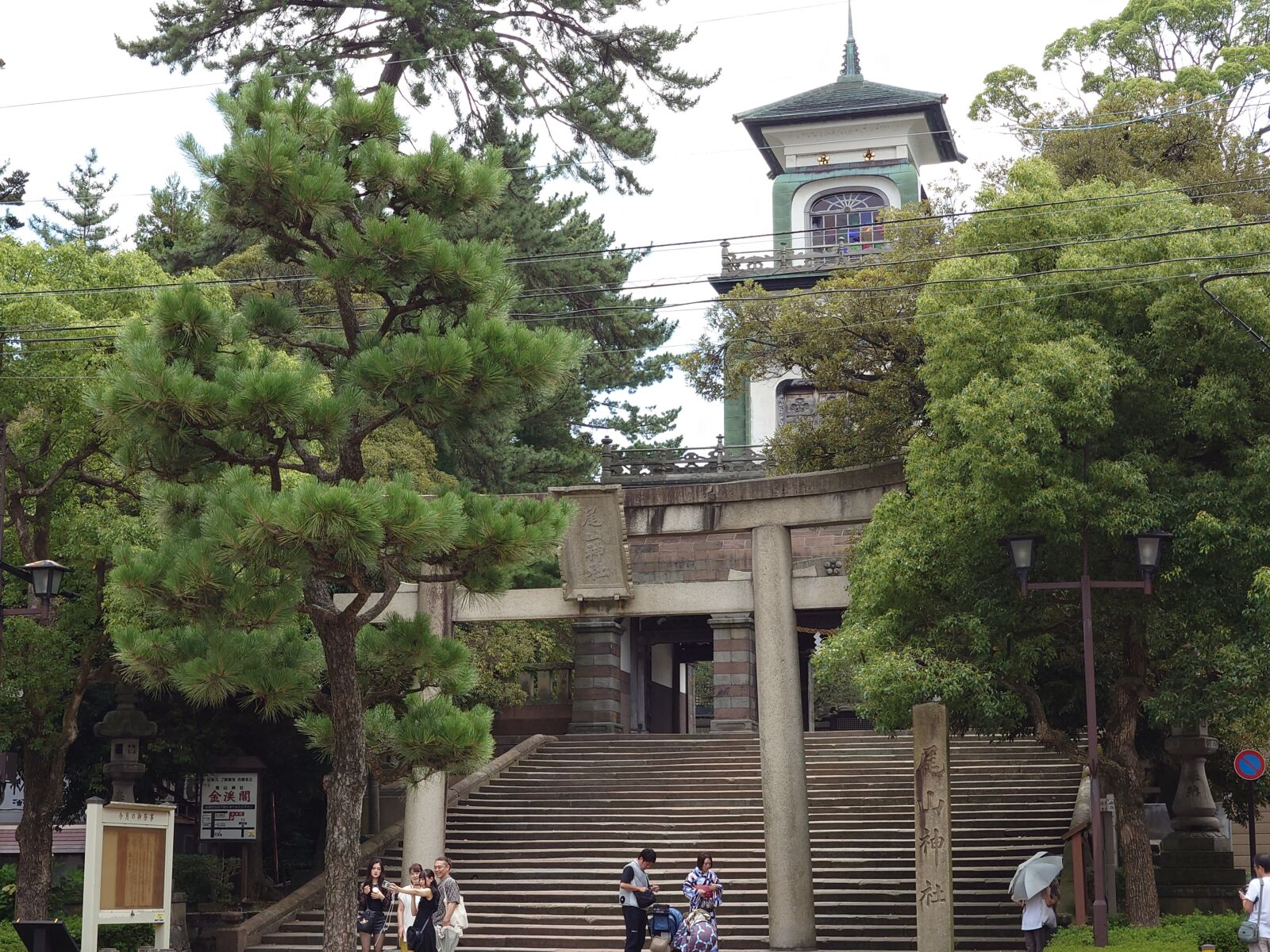
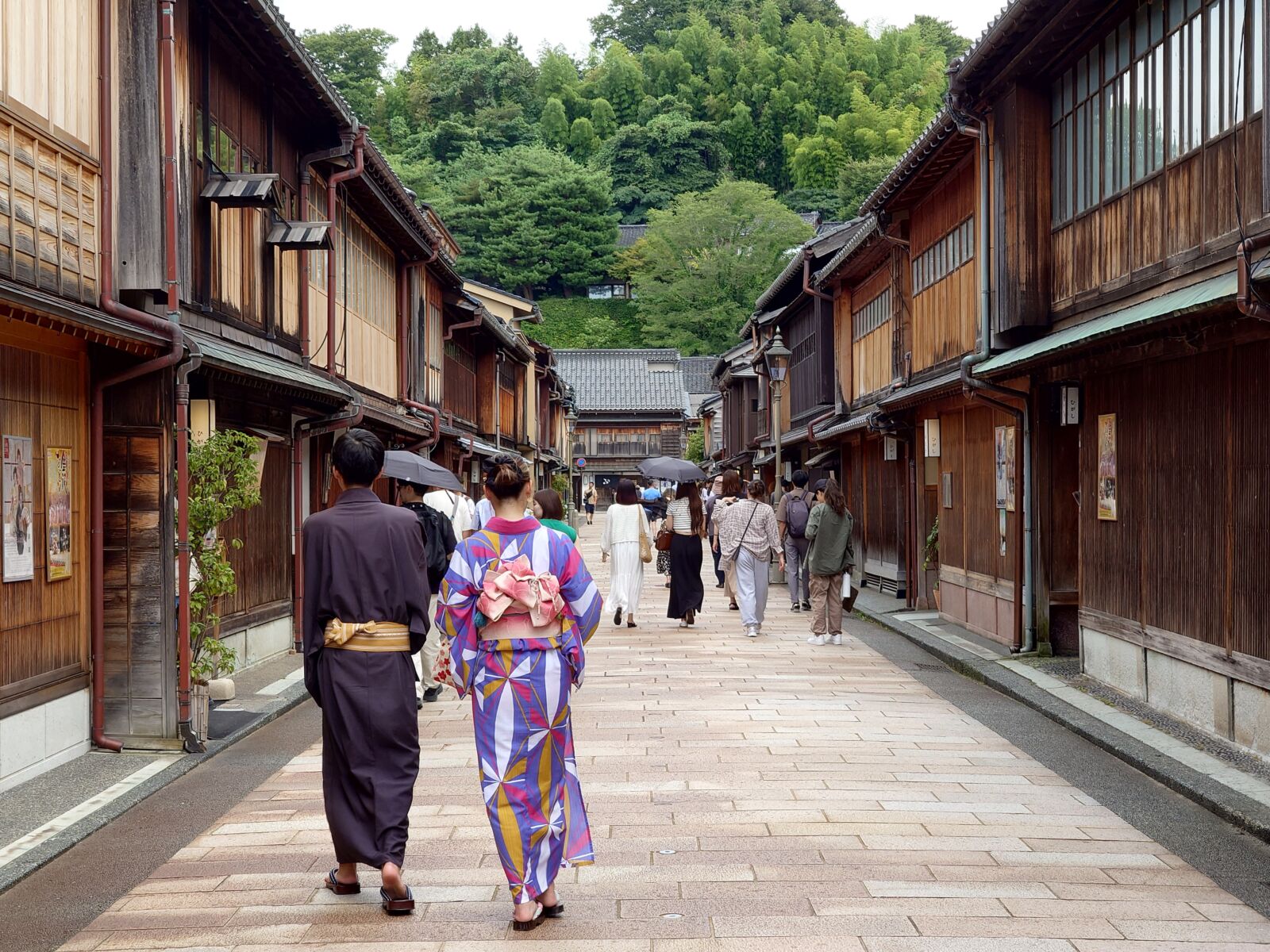
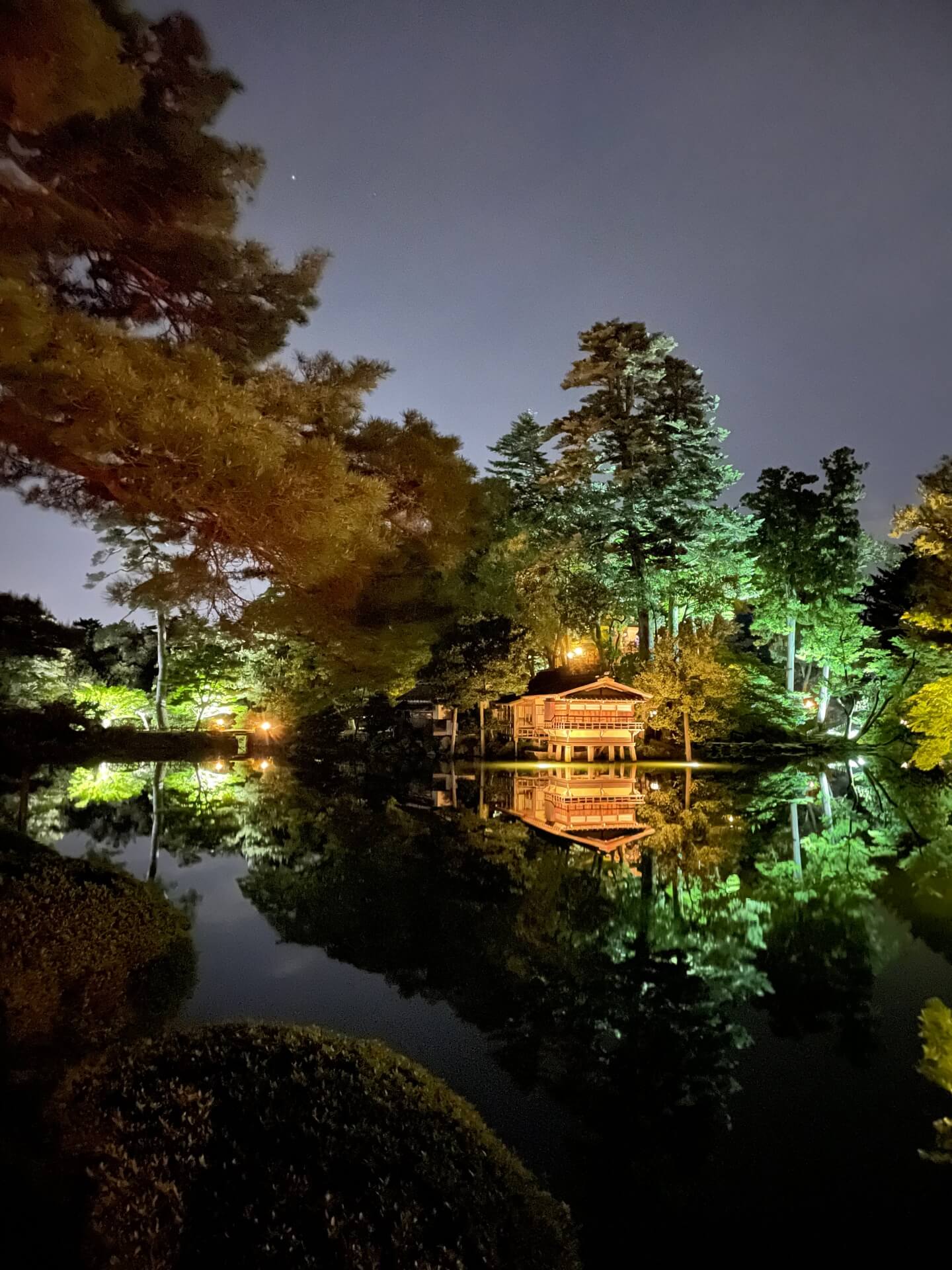
Frequently Asked Questions (FAQ)
Will I see geisha if I go to the Higashi Chaya District?
Almost definitely not. Due to repeated harassment in geisha districts across the country, geisha are increasingly wary of venturing out in public. While we understand many people want to see geisha during their visit, it is unlikely. However, if you do see one, we'd encourage you to be respectful of their space. The worst thing you can do is chase them for a photograph.
Are all of the houses here original?
Almost all of them are not entirely original. Most have been rebuilt or repaired extensively in the last 100 years. However, the aesthetic of the district has stayed true to how it was, so the feeling of walking through Higashi Chaya is authentic.
When is the best time to visit Higashi Chaya?
Higashi Chaya is a place worth visiting all year round. Most of the shops don't open until 9:00 A.M. and close around 5:00 P.M., so visit during the day if you're looking to do some shopping. Early morning and evening are great times to visit the district when it's quiet, though. You can take pictures and enjoy the peaceful atmosphere. Be careful, though, as some of the houses are lived in!
I saw a woman in a kimono, was she a geisha?
It's unlikely, but possible! A common activity for people of all ages in Japan is to dress in traditional clothes like kimono or yukata, their summer equivalent, and visit old timey districts. Many people do so in Higashi Chaya. Seeing locals wearing traditional dress is one of the most charming things in the district.
I'd like to come to Higashi Chaya on a tour - is that possible?
Of course! To get the best out of your time in Higashi Chaya, check out our "Kanazawa Walking Tour: Experience Gold Leaf, Japanese Sweets and Ninja Stars" tour. This walking tour will give you a taste of some Kanazawa's best experiences. We decorate products with gold leaf, make traditional wagashi sweets and try our hand at throwing ninja stars. On the way, we walk through the streets of Higashi Chaya and stop for lunch. There's also free time here, so you can take your time shopping or stepping into a museum or gallery.
Kanazawa Walking Tour: Experience Gold Leaf, Japanese Sweets and Ninja Stars
- Spots:
- Pick-up:
- Drop-off:



